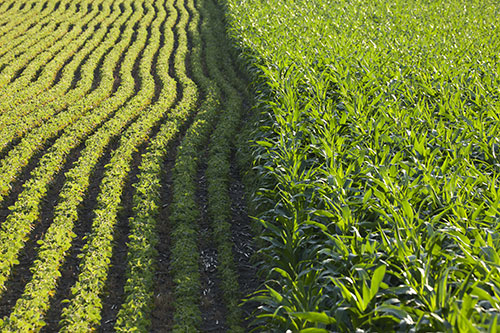What is Glycerin and why is it important?
Glycerin is one of the most common ingredients in cosmetics, as it has many properties that can benefit both the cosmetic product itself and our skin. There are many different sources of glycerin, but the end effect is always the same basic chemical composition:
Three carbon atoms, each with an OH group and a bunch of Hydrogen atoms. This is what it looks like:
 or
or  or
or  or
or 
Glycerin is made from oil. Oils are triglycerides, which are basically three fatty acids attached to the glycerol chain:
H H-C-O-Fatty Acid #1 │ H-C-O-Fatty Acid #2 │ H-C-O-Fatty Acid #3 H |
To make glycerin, we use the process of hydrolysis, which inserts a water molecule (H20) between the glyceryl backbone and the fatty acid, separating the one triglyceride molecule into four parts: the glycerol backbone, fatty acid #1, fatty acid #2 and fatty acid #3. The water molecules are within the boxes in the diagram below.
H H-C-O-H HO-Fatty Acid #1 │ H-C-O-H HO-Fatty Acid #3 H |
Hydrolysis can be powered by enzymes called lipases or can be chemically driven by other compounds, such as lye. The results are the same. Also, the fatty acids can be any possible combination and the glycerol backbone will be the same.
The differences between the different glycerin products on the market are basically the source of the oils that are hydrolyzed. Here are some examples and a quick statement about them:
Mineral oil: often a by-product of the oil industry and must be cleaned of toxins. Non renewable source. Petroleum? Really???
Animal Fats: glycerin is a by-product of animal soap production. Yuch. Not vegetarian. Not vegan.
Coconut: good quality glycerin, non-GMO, in organic quality available
Palm: good quality, non-GMO, organic available. BUT: non-sustainable plantations contribute to deforestation of tropical rainforests. MUST request RSPO (Roundtable on Sustainable Palm Oil)
Rapeseed: good quality, but can be GMO (US sourced)
Soy: rich in fats, is also a good source, but can be GMO. (US sourced)
Synthetic Glycerin can also be manufactured synthetically. The end product is the same as the natural hydrolysis, but Yuch! It’s just chemicals.
- Here at Dorith Kosmetik we use 100% Glycerine made from organic certified source materials, soy and corn. It is palm oil and GMO-free!

What is Glycerin Good For?
Glycerin is an exceptionally good moisturizing, emollient and protective agent. It binds so well to water, that it can keep your skin moisturized. It can retard TEWL (Trans Epidermal Water Loss) and help you skin look and feel soft and silky.
Glycerin is an excellent solvent and is used to make many botanical extracts called Glycerites. Because of its affinity to water, it is often used as a natural preservative.
In very high concentrations, Glycerin will pull moisture OUT of your skin, so do not use it undiluted on your skin. Some cleaning products contain up to 99% glycerin. Although it cleans well, it will wear down the skin’s protective barrier at this concentration.
It is no wonder that glycerin is the 3rd most commonly used ingredient in cosmetics after water and fragrance!
Did you know?
In the dietary supplement industry, we use glycerin to sweeten, thicken and (by the way) preserve liquids. With an amount of 60% glycerin, all the “free” water will be bound to the glycerin, making it unavailable to microbial organisms. Without water, they cannot grow and the product can be considered “preservative free”.
As you can see, glycerine is a multifaceted product that is widely used in many different industries. We at Dorith Kosmetik are indeed happy to use it too, since it works quite well in our own products!
Images:
Kim, Anna. Transparente Gel-Textur einzeln auf weißem Hintergrund. https://www.shutterstock.com/de/image-photo/transparent-gel-texture-isolated-on-white-1899155803. ID: 1899155803. Accessed 11.06.2021
Thornberg, Dan. Rows of corn and soybeans next to each other in a sunlit field on a summer day. https://www.shutterstock.com/image-photo/rows-corn-soybeans-next-to-each-other-291096281 ID: 291096281. Accessed 11.06.2021
